Debt is a reality for many people, and finding the best method to pay it off can be a daunting task. However, two popular strategies have emerged in recent years: the debt snowball method and the debt avalanche method. Both approaches have their merits, but it is important to understand the differences between them in order to make an informed decision. In this blog post, we will explore the debt snowball and debt avalanche methods, discuss their benefits and challenges, and provide guidance on how to choose the right method for your financial situation.
What is the debt snowball method?
The debt snowball method is a debt repayment strategy popularized by personal finance expert Dave Ramsey. The basic idea behind the debt snowball method is to pay off debts from smallest to largest, regardless of interest rates. To start, you list all of your debts in order from smallest to largest balance. Then, you focus on making minimum payments on all of your debts except the smallest one. For the smallest debt, you throw as much money as possible at it until it is completely paid off. Once the smallest debt is paid off, you move on to the next smallest debt and repeat the process. This method continues until all of your debts are paid off.
What is the debt avalanche method?
The debt avalanche method, on the other hand, is a strategy that prioritizes paying off debts based on their interest rates. With this method, you list all of your debts in order from highest to lowest interest rate. You then focus on making minimum payments on all of your debts except the one with the highest interest rate. For the debt with the highest interest rate, you throw as much money as possible at it until it is completely paid off. Once the highest interest debt is paid off, you move on to the debt with the next highest interest rate and repeat the process. This method continues until all of your debts are paid off.
What are the differences between the debt snowball and debt avalanche methods?
The main difference between the debt snowball and debt avalanche methods is the order in which debts are prioritized. The debt snowball method prioritizes debts based on their balance, while the debt avalanche method prioritizes debts based on their interest rates. This means that with the debt snowball method, you may pay off smaller debts first, even if they have lower interest rates. On the other hand, with the debt avalanche method, you may pay off debts with higher interest rates first, even if they have larger balances.
What are the financial and psychological benefits of each method?
The debt snowball method offers several financial and psychological benefits. By paying off smaller debts first, you can experience a sense of accomplishment and motivation to continue on your debt repayment journey. This method can also free up cash flow as you eliminate smaller monthly payments. Additionally, the debt snowball method can provide a psychological boost by reducing the number of debts you owe, even if the overall amount of debt remains the same.
The debt avalanche method, on the other hand, can save you money on interest payments in the long run. By prioritizing higher interest debts, you can minimize the amount of interest that accrues over time. This method can also help you pay off your debts more quickly if your higher interest debts have larger balances. From a psychological perspective, the debt avalanche method can provide a sense of relief as you tackle your debts in an organized and strategic manner.
What are some of the challenges of each method?
While both the debt snowball and debt avalanche methods have their benefits, they also come with their own set of challenges. The debt snowball method may not be the most cost-effective strategy, as paying off smaller debts first could result in paying more interest over time. Additionally, this method may not work as well for individuals who are motivated by financial savings rather than small victories.
On the other hand, the debt avalanche method may require more discipline and patience. It can be discouraging to see larger balances remain unpaid while focusing on debts with higher interest rates. This method may also take longer to see tangible results, which can be demotivating for some individuals.
What factors should be taken into consideration when deciding which method to use?
When deciding between the debt snowball and debt avalanche methods, it is important to consider several factors. First, assess your financial situation and determine whether saving money on interest payments or experiencing small victories is more important to you. If you are highly motivated by the psychological benefits of paying off smaller debts first, the debt snowball method may be the right choice for you. On the other hand, if you are more focused on minimizing interest payments and have the discipline to stick with a long-term strategy, the debt avalanche method may be a better fit.
It is also important to consider your overall financial goals and priorities. If your main objective is to become debt-free as quickly as possible, the debt avalanche method may be the most efficient strategy. However, if you are looking to improve your cash flow and build momentum in your debt repayment journey, the debt snowball method may be more suitable.
Conclusion
In conclusion, both the debt snowball and debt avalanche methods have their merits and can be effective strategies for paying off debt. The debt snowball method offers psychological benefits and can provide a sense of accomplishment, while the debt avalanche method can save you money on interest payments in the long run. When choosing the right method for your financial situation, it is important to consider factors such as your motivation style, financial goals, and overall priorities.
Understanding the differences between these two methods is crucial in order to make an informed decision. By choosing the method that aligns with your goals and motivations, you can set yourself up for success on your debt repayment journey.
Remember, paying off debt is a journey that requires dedication and persistence. By understanding the different approaches of debt snowball and debt avalanche, you can make an informed decision and take control of your financial future.







